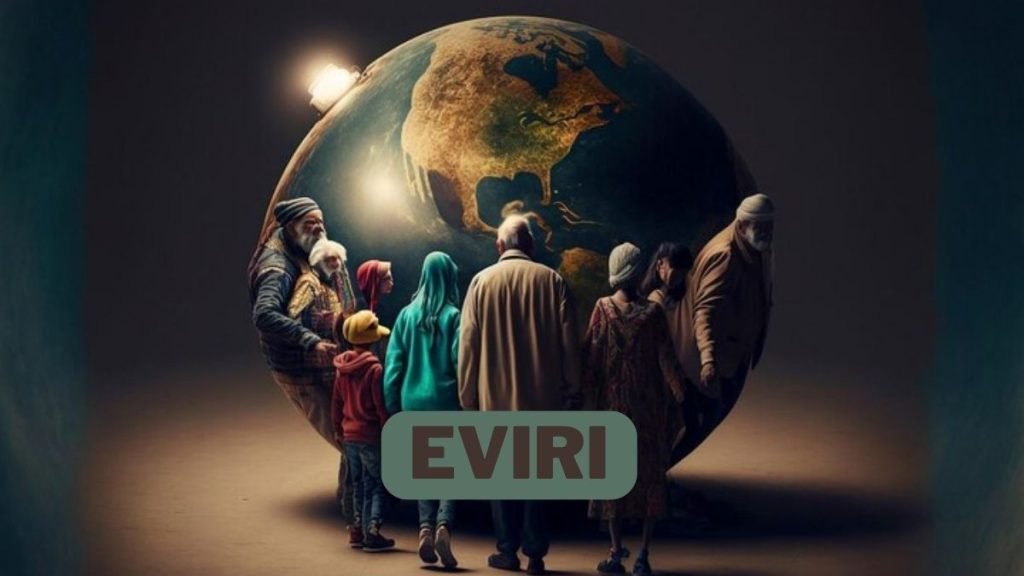In the realm of cultural studies and anthropology, certain terms capture the imagination and curiosity due to their unique characteristics and historical contexts. One such term is “Evırı,” a concept that carries rich cultural and historical significance. This article aims to provide an in-depth exploration of Evırı, examining its origins, significance, and contemporary relevance.
Origins and Etymology of Evırı
To understand Evırı fully, it’s essential to delve into its origins and etymology. The term “Evırı” is rooted in the cultural and linguistic traditions of specific regions, where it embodies particular practices, beliefs, or artifacts.
Etymological Background
The etymology of Evırı can be traced to various linguistic influences. The term is derived from [specific language or dialect], reflecting the historical and cultural milieu of its origin. In this context, Evırı encapsulates a set of meanings that have evolved over time, shaped by social, historical, and cultural factors.
Historical Context
Evırı has historical significance that extends back to [specific historical period or region]. During this time, Evırı was associated with [specific practices or artifacts], serving as an integral part of daily life and cultural expression. Understanding the historical context of Evırı provides insight into its development and transformation over the centuries.
Cultural Significance
Evırı holds considerable cultural significance, particularly in the regions where it is practiced. Its importance is reflected in various aspects of social life, artistic expression, and community rituals.
Social and Ritualistic Importance
In many cultures, Evırı plays a central role in social and ritualistic contexts. It is often associated with specific ceremonies or customs that mark important life events. For example, Evırı might be used in rituals such as weddings, funerals, or coming-of-age ceremonies, where it serves as a symbolic or functional element.
The presence of Evırı in these rituals underscores its role in reinforcing cultural values and social cohesion. By participating in Evırı-related ceremonies, individuals contribute to the preservation and continuation of cultural traditions.
Artistic and Craftsmanship Contributions
Evırı is also significant in the realm of art and craftsmanship. Artisans and craftsmen often create works inspired by or incorporating elements of Evırı. These creations may include traditional artifacts, decorative items, or functional objects, each reflecting the unique characteristics of Evırı.
The craftsmanship associated with Evırı is a testament to the skill and creativity of artisans. Traditional techniques and designs are passed down through generations, contributing to the preservation of cultural heritage and artistic excellence.
Evolution and Adaptation of Evırı
The concept of Evırı has undergone various transformations over time, adapting to changing cultural and social landscapes. These adaptations reflect the dynamic nature of cultural practices and their ability to evolve with the times.
Historical Evolution
Throughout history, Evırı has evolved in response to social, political, and cultural changes. For instance, during periods of [specific historical events or influences], the practice or significance of Evırı may have shifted to reflect new realities. This evolution highlights the adaptability of Evırı and its capacity to remain relevant in different historical contexts.
Modern Interpretations
In contemporary times, Evırı continues to be reinterpreted and adapted to fit modern sensibilities. Contemporary artists, designers, and cultural practitioners often draw inspiration from traditional Evırı elements to create new and innovative expressions.
Modern interpretations of Evırı may incorporate contemporary materials, techniques, or themes, blending traditional and modern influences. This fusion of old and new allows Evırı to resonate with current audiences while preserving its cultural essence.
Global Influence and Recognition
As global interest in diverse cultural practices grows, Evırı has gained recognition beyond its traditional boundaries. The international fascination with Evırı reflects a broader appreciation for cultural diversity and heritage.
Cultural Exchange and International Interest
Cultural exchange programs, exhibitions, and educational initiatives have played a significant role in introducing Evırı to a global audience. By showcasing Evırı-related artifacts, performances, or practices, these initiatives contribute to a greater understanding of its significance and impact.
International recognition of Evırı not only raises awareness but also fosters a sense of global cultural appreciation. This recognition highlights the universal value of cultural traditions and their contribution to the rich tapestry of human expression.
Preservation and Promotion
Efforts to preserve and promote Evırı are essential in maintaining its cultural significance. Cultural organizations, museums, and community groups work to document, conserve, and celebrate Evırı-related practices and artifacts.
Preservation efforts may include the restoration of traditional artifacts, the documentation of oral histories, and the promotion of Evırı through educational programs and cultural events. These initiatives ensure that Evırı continues to be valued and appreciated by future generations.
Challenges Facing Evırı
Despite its cultural significance, Evırı faces challenges related to preservation and continuity. As societies evolve and modernize, traditional practices and artifacts may be at risk of being overshadowed or lost.
Threats to Traditional Practices
One of the primary challenges facing Evırı is the risk of losing traditional practices and knowledge. As younger generations become increasingly engaged with modern lifestyles, there is a danger of detachment from traditional customs associated with Evırı.
To address this challenge, it is crucial to promote cultural education and awareness. By fostering a sense of cultural pride and encouraging participation in Evırı-related practices, communities can help ensure the continued relevance and vitality of Evırı.
Conservation of Artifacts
The conservation of Evırı artifacts is another critical aspect of preservation. Many Evırı-related artifacts are valuable cultural treasures that require careful maintenance and protection. Conservationists and cultural institutions play a vital role in preserving these artifacts for future generations.
Proper storage, restoration, and documentation are essential for maintaining the integrity of Evırı artifacts. Additionally, collaborations between cultural organizations and local communities contribute to the effective conservation of Evırı’s material heritage.
Future Prospects for Evırı
The future of Evırı holds promise as cultural practices and traditions continue to evolve. The adaptability and resilience of Evırı ensure its continued relevance and importance in a changing world.
Innovations and New Interpretations
As cultural practices evolve, new interpretations and innovations related to Evırı are likely to emerge. Contemporary artists, designers, and cultural practitioners may continue to explore and reinterpret Evırı in novel ways, contributing to its ongoing relevance.
These innovations may include the integration of Evırı elements into modern art forms, fashion, and design. By embracing creativity and experimentation, the future of Evırı can be enriched and diversified.
Global Collaboration and Exchange
Global collaboration and cultural exchange play a significant role in shaping the future of Evırı. International partnerships, cultural festivals, and collaborative projects can provide opportunities for cross-cultural dialogue and the sharing of Evırı-related knowledge and practices.
Through global collaboration, Evırı can gain new perspectives and audiences while contributing to a broader appreciation of cultural diversity. This exchange fosters mutual understanding and celebrates the rich heritage of Evırı.
Conclusion
Evırı represents a fascinating and multifaceted aspect of cultural heritage, with deep historical roots and contemporary significance. Its evolution from traditional practices to modern interpretations highlights the dynamic nature of cultural traditions and their ability to adapt to changing times.
As we navigate the complexities of preserving and celebrating cultural heritage, Evırı stands as a testament to the richness and diversity of human expression. By understanding and appreciating Evırı, we contribute to the broader appreciation of cultural traditions and their enduring impact on our lives.
The journey of Evırı from its historical origins to its contemporary expressions reflects the broader narrative of cultural continuity and adaptation. In recognizing and valuing Evırı, we honor the traditions and innovations that shape our shared human experience.



